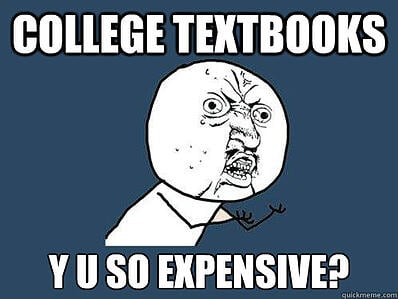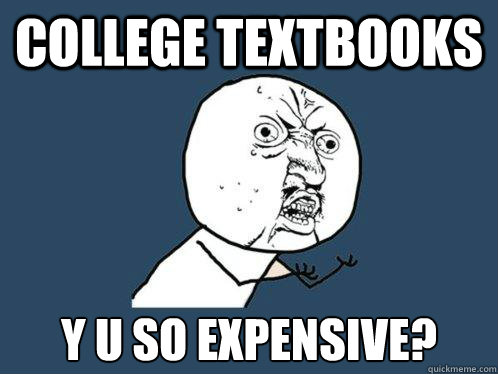 Not only are textbooks expensive, their prices increase at a rate of inflation...triple the consumer price index rate (PDF). That’s crazy. But, to anyone who works in education, has been a student in the recent past, or is the parent of a student, not surprising.
Not only are textbooks expensive, their prices increase at a rate of inflation...triple the consumer price index rate (PDF). That’s crazy. But, to anyone who works in education, has been a student in the recent past, or is the parent of a student, not surprising.
What might be more surprising, however, is the dissatisfaction that is brewing among other players in the education book market with the status quo. The growing importance of the open source model for product development is creating the conditions for a revolution in how students access educational resources. See below for a few events that are fueling this revolution:
- Textbook authors currently receive dismal royalties from publishers,
- University bookstores make meager profit selling textbooks, and crucially
- As they grow in prominence, open education resources (OER) stand to offer better value to all three—students, authors, and sellers.
How might OER overturn the current publishing system?
- Open, free access is a core principle of OER, and generally means much lower-priced (or entirely free) access to textbooks and other informational materials.
- The open, adaptable nature of OER means textbooks and other materials can be collaboratively improved by all users. They can also be accessed by a much, much wider audience—increasing the format’s appeal to authors’ whose writing royalties offer very little financial incentive to stick with the medium.
- Sellers stand to make a better margin printing OER on-demand for students, and these services can help combat the rise of lower-priced, impossible-to-compete-with third-party sellers simultaneously.
While OER isn’t the first attempt to wrestle away textbook publisher control over pricing, it is by far the biggest change in approach to the current system of how educational materials are produced, distributed, acquired, updated, and purchased. Content isn’t confined to a single medium (like printed books) either. OER materials can be adapted or re-purposed to fit into multi-channel open learning platforms—say, as a web page, or an audio track, or an animated infographic—consumed in a desktop web browser, on a tablet, phone, or printed out. This is the hallmark of the open source movement: a good core product, adapted to meet a specific need.
A large number of open education resources already exist, but the transition away from expensive textbooks is still in the early stages. In the coming Fall semester at schools across North America, students will still likely shell out $120 per course for books that will quickly become obsolete. Though it might not fully numb the sting to their wallets, they should seek comfort in knowing they could be the last generation to do so.




